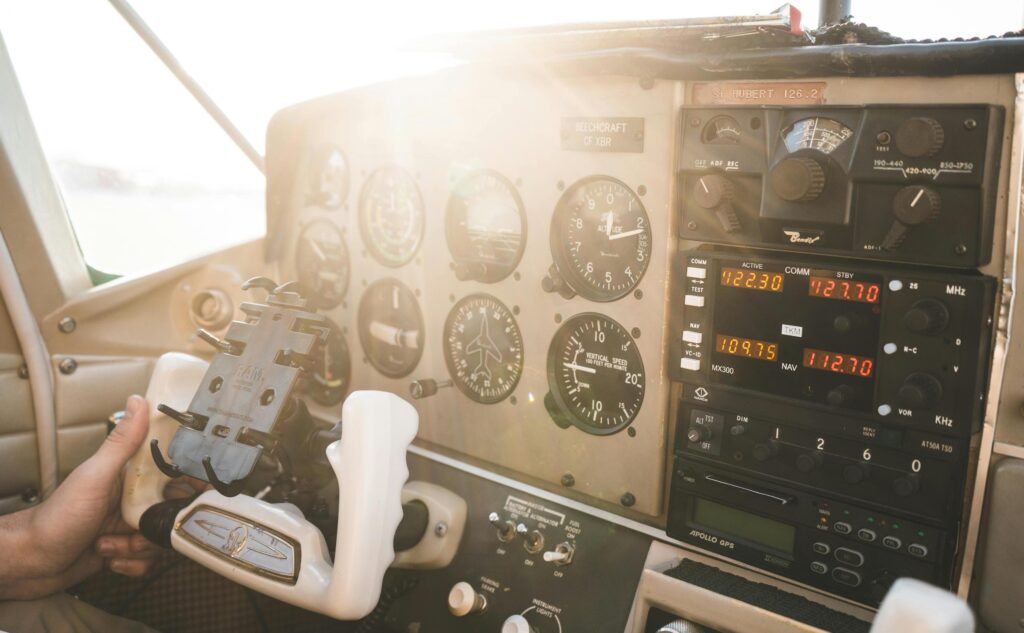
Is Your Aircraft too Broken to Fly?
Unserviceable equipment doesn’t always mean your aircraft is unsafe or illegal to fly.
Even a meticulously maintained aircraft can encounter unexpected snags. These issues often arise right before a planned trip or when you’re far from home base. But that doesn’t necessarily mean your aircraft can’t be flown legally. Unserviceable equipment doesn’t automatically make the aircraft unairworthy or unsafe.
As the pilot-in-command, you are responsible for the safety of the flight. You must decide whether your aircraft is suitable for the flight, even if part of its system or equipment isn’t working. This decision depends heavily on the type of operation and current conditions. Of course, you can’t make your own rules—although more conservative choices are possible. Check out our blog post on the Three-Strikes Policy for more on that. However, several sources can help you make an informed decision about flying with unserviceable equipment.
Resources to Check When Dealing with Unserviceable Equipment
Larger, commercially operated aircraft typically use a Minimum Equipment List (MEL). The MEL is derived from the Master Minimum Equipment List (MMEL), defined by the manufacturer and approved by aviation authorities during certification. Flight crews use the MEL to decide if the inoperative equipment is necessary for the planned flight and whether it must be functional.
In general aviation, we usually don’t have an MEL. As a result, we need to gather information from multiple sources to decide if we can legally fly the aircraft with unserviceable equipment. This depends on the type of aircraft (whether an MMEL is available) and the nature of the operation (non-commercial). Pilot-owners operating under Part-NCO or Part-91 must consider the following:
- Legal Requirements (Part-NCO/Part-91)
- Type Certificate Data Sheet (TCDS)
- Equipment List/Kinds of Operations Equipment List (KOEL)
- Airworthiness Directives
Unfortunately, general aviation piston and turboprop-powered aircraft don’t typically have an MMEL, meaning we must consolidate all available information.
Legal Requirements (Part-91/Part-NCO)
The regulations for air operations define the minimum required equipment for operating under visual or instrument flight rules, whether by day or night. In Europe, Part-NCO covers non-commercial operations with non-complex motor-powered aircraft. In the United States, Part-91 governs general operations, defining the minimum equipment required for these flight conditions.
Additionally, the required equipment specified by the aircraft manufacturer must also be considered. This information can be found in the Type Certificate Data Sheet (TCDS). For EASA-certified aircraft, the Operational Suitability Data (OSD) section within the TCDS provide relevant details. Furthermore, the aircraft’s Equipment List or Kinds of Operations Equipment List (KOEL), stated in the Aircraft Flight Manual (AFM) or Pilot Operating Handbook (POH), outlines any required equipment.
Type Certificate Data Sheet (TCDS)
The Type Certificate Data Sheet provides essential details about the aircraft type and its variants. The TCDS typically includes:
- General Information
- Certification Basis
- Technical Characteristics and Operational Limitations
- Operating and Service Instructions
- Operational Suitability Data (if applicable)
- Notes
These sections help determine which equipment is mandatory for the aircraft to be legally and safely operated under specific conditions.
Equipment List/Kinds of Operations Equipment List (KOEL)
The KOEL specifies which equipment must be operational for different types of operations, such as Visual Flight Rules (VFR), Instrument Flight Rules (IFR), day, or night. It is typically found in the aircraft’s AFM or POH. If an item is required for your planned operation, it must be functional before you can legally fly.
If the equipment isn’t required for your intended operation, you can legally fly the aircraft without it. However, always consider the impact on flight safety before making that decision.
Airworthiness Directives
Airworthiness Directives (ADs) are legally enforceable regulations issued by aviation authorities like the FAA or EASA. They are designed to address safety issues with specific aircraft models or equipment. ADs often specify required inspections, repairs, or modifications. If an AD requires certain equipment to be operational, you must comply before flying the aircraft.
Regularly reviewing and complying with ADs is crucial to ensuring the airworthiness and legal status of your aircraft.
Conclusion
In general aviation, unserviceable equipment doesn’t always ground your aircraft. However, as the pilot-in-command, you are responsible for making an informed decision. Always consider legal requirements, manufacturer guidelines, and safety implications. Understanding how to use the TCDS, KOEL, and applicable Airworthiness Directives can help you determine whether your aircraft is safe and legal to fly.
By taking these steps, you ensure the safety of your flight and compliance with all relevant regulations. Never hesitate to seek professional advice if you’re unsure. Fly safe, and remember that good preparation is key to a successful flight.
About Quest Aeronautics
Quest Aeronautics is a state-certified engineering office for aviation, dedicated to shaping the future of general aviation by providing innovative and cost-effective solutions to enhance aircraft performance and operations. With a focus on CS/FAR-23 and experimental/amateur-built (E/A-B) aircraft, Quest Aeronautics provides a range of services including flight testing, aircraft operations and maintenance consulting, high-quality aviation products, and tailored support for E/A-B projects. Collaborating with industry-leading partners, Quest Aeronautics is committed to delivering unparalleled support and expertise to individuals and organisations in the general aviation market.
About Author
Sebastian, the founder of Quest Aeronautics, is a driven and enthusiastic individual with a passion for aviation. Before delving into aviation, he gained valuable experience as a chemical process engineer and laboratory technician. Sebastian holds a Master of Science in Engineering and a commercial pilot licence, with several fixed-wing aircraft ratings under his belt. He has also completed an introduction course for fixed-wing performance and flying qualities flight testing at the National Test Pilot School in Mojave, CA and is compliance verification engineer for flight.
